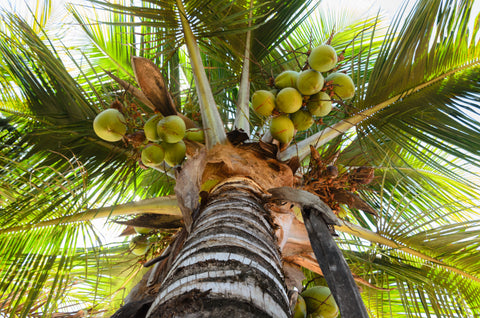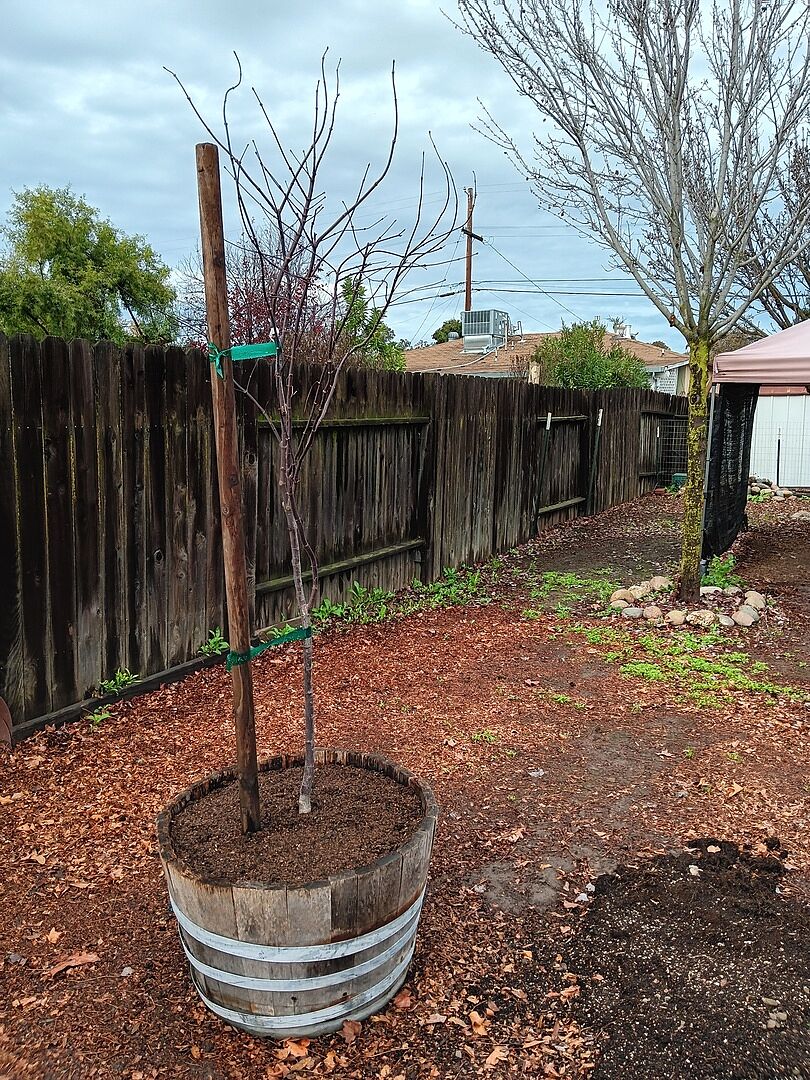Plant Showdown: Palm Trees vs. Coconut Trees

Last updated: Jun 10 2022

Is it a coconut tree or a palm tree? The answer may surprise you. Many people get confused between the two–for good reason! That’s why we've consulted with our plant experts to help you decide what’s the perfect palm for you.
Below are some of the key similarities and differences that we think will be helpful as you pick your tropical tree. Check it out!
Palm Trees vs. Coconut Trees: Similarities & Differences
All coconut trees are technically palm trees…
It’s probably safe to assume that everyone knows what a palm tree is. In fact, a coconut tree is indeed a type of palm tree. They both are long and slender with lush, swaying fronds that typically grow from the top of an unbranched stem.
…But not all palm trees are coconut trees
There is only one species of palm tree that can bear coconuts: the Cocos nucifera. These large exotic fruits can vary in shape, size, and color based on the age, health, and variety of the tree. You can use coconuts for a range of purposes, too. From eating its white insides and drinking the water to using the oil it produces for cooking and skincare—there’s a whole lot to love about coconut palms!
Both can be grown indoors…
You may be surprised to hear that both the coconut palm tree and other palm trees will grow just fine indoors. In fact, even if you live in a cooler climate, you can grow these trees in a container with the proper care. All your indoor palms need is light fertilization, frequent watering, and indirect sunlight.
For example, you can place your coconut palm outside on warm, sunny days, and bring it indoors during the colder months. As tough, low-maintenance trees, they will also work perfectly on your porch or patio, performing well in low-light conditions.
…But only outdoor coconut trees will bear fruit
Although coconut palm trees can be placed indoors, keep in mind that they won’t produce fruit while inside. The same is true for other fruiting palm trees!
Both offer a wide-range of uses…
That’s right–both produce palm oil (great for cooking, beauty products, medicines, and more). More into crafting? Both trees’ leaves, husks, and wood can be used for making baskets, brooms, wall coverings, thatching, and other unique creations!
…But other varieties of palm tree grow faster
Want to reap in your tree’s benefits generation after generation? Many other palm trees can last up to 150 years and grows at a much quicker pace than the coconut palm tree. There are also 2600 varieties available, giving you an even wider range of trees (and uses!) to choose from, should you want to use it for something specific.
Which Plant to Choose?
Considering the long list of benefits, we understand how difficult it can be to decide whether the coconut pam tree or palm tree is right for your home. So, that’s why we’re sharing some of our favorites to help you narrow things down. Take a peek!
For Predictability: Coconut Palm Tree
There’s virtually no guesswork when it comes to caring for your coconut palm tree. In fact, long-term maintenance for coconut trees becomes a breeze after the initial planting. So, if you’re looking for a portable option that thrives both indoors and out, is drought tolerant, and produces coconuts (when outside), look no further than the classic coconut palm!

Coconut Palm - Plant Outside to Get the Goods
This particular palm is the most popular variety of the Cocos nucifera species. It produces large, savory coconuts for paradise-minded people around the world.
While it’s only possible to grow your own coconuts if you plant it outside, even indoor coconut palms will reach 10 feet tall. Closer to maturity, this variety will develop beautiful, ringed gray bark, and a large crown filled with fronds that are covered with bright green leaflets. And if you’re planting outdoors, you can expect your tree to reach up to 40 feet and flourish with coconut fruits.
The best part? Our coconut palm trees will start producing fruit when there are around 2-3 feet of gray bark (much sooner than other coconut trees!). In addition, no matter where you plant it, coconut palms are tough, low-maintenance trees that have a high heat- and drought-tolerance and wind-resistance.
So, if you’re interested in growing coconuts in your own yard this year, our coconut palm is right for you!
For Variety: Palm Trees
It’s no secret that palm trees are known for their extreme versatility and resilience. But we give them our vote for variety, as there are hundreds of kinds to choose from, all with their own unique characteristics! Here are a few of our staff picks below:

Windmill Palm Tree - A Palm for Colder Climates
Want to bring the tropics to your home up North? Then, the Windmill Palm will do just that! Because this variety is one of the most cold hardy palms available on the market, it’s become a very popular choice for those living in chillier climates. Not only that, but the Windmill is relatively low-maintenance and requires very little watering and sunshine to thrive!

Areca Palm - An Easy-Care Palm for Indoor Elegance
The Areca Palm looks a little different than what you’d expect from a palm tree. Its trunk is clumping, meaning that its many smaller stems grow clumped together (resembling bamboo!). An Areca thrives in pots and low light conditions, so it’s a great choice for container planting. These palms also clean the air and bloom with creamy white flowers!

Pindo Palm - A Lavish Palm With Juicy Fruit
Who says palm trees only grow coconuts? This lovely variety produces a hefty yield of juicy, amber-colored Pindo dates–perfect for savory jams and jellies! In addition, the Pindo Palm has an attractive curb appeal, with low-growing pale green leaves, inward curving fronds, and an impressive spread of 15 feet.
Palm Tree or Coconut Tree: Which Is Better?
While we’d love to say one is better than the other, that’s an impossible question to answer! Comparing them is much like measuring apples to oranges. Both have their advantages and are popular among gardeners. Here are a few questions that might help you make your decision:
- Do I want a fruit-bearing tree? Do I live in the right growing zone to plant it outside?
- Do I want a multi-purpose tree or simply a tree to admire?
- How much room does my yard have?
- Is planting indoors an option?
No matter what you plant, both the palm tree and coconut palm tree will bring you the island spirit every summer! To explore our entire palm tree collection this growing season, you can take a look, here.
Pssst! We’d love to see which trees you choose, so be sure to tag @FastGrowingTrees on Instagram, TikTok, and Facebook so we can re-share on social media!

Written by
Elizabeth Durham
Though cursed at birth with a black thumb, Elizabeth always dreamed of being a plant person. Turns out she just needed a little guidance—now she’s the proud mama of nearly a dozen house plants! After joining FastGrowingTrees.com as a Content Strategist, she’s expanded her knowledge tenfold and learned how to keep her plants alive…most of the time.
As a newbie in the plant world, Elizabeth understands the struggles of beginner gardeners. And as an experienced writer, she loves creating content that makes difficult concepts easy to understand. In her free time, she enjoys immersing herself in nature through daily lunchtime walks, weekend hikes, and visits to the park with her dog Fred.
Featured Product

Coconut Palm Tree
95 reviewsStarting at $72.95






















































































































































































































































